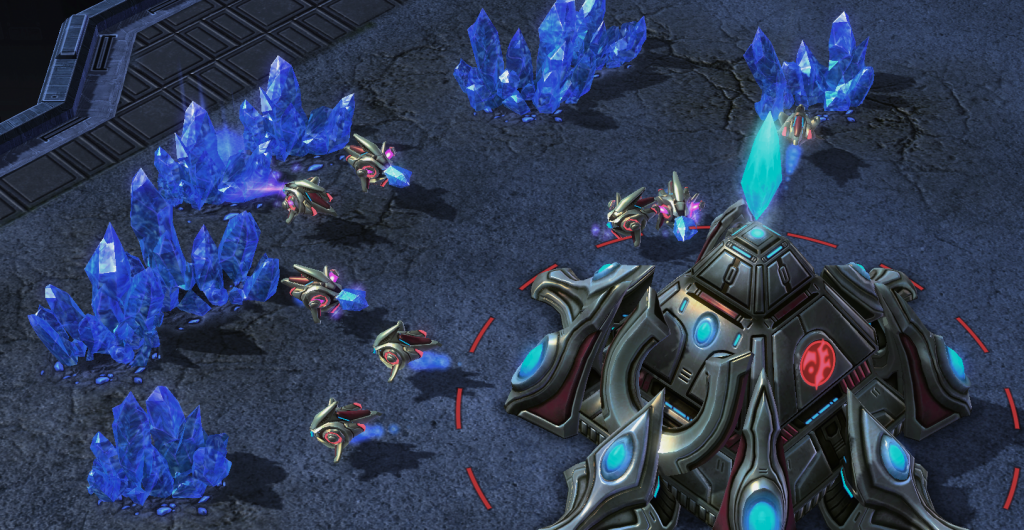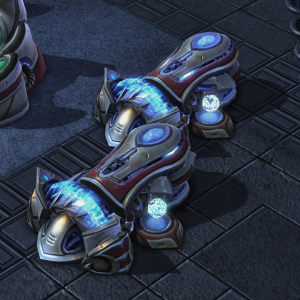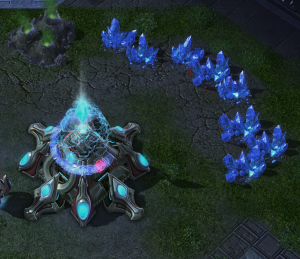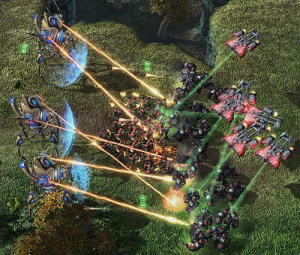Scouting With the Right Priorities
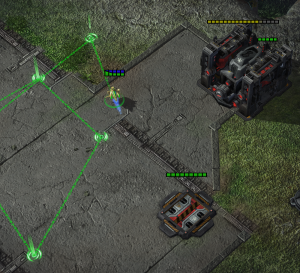
I know i'm supposed to scout, but what am I looking for?
I know and i’m sure that you know that it is important to scout. You may even know specifically when you should scout, “Scout at 9/10 after building a Pylon”. I’m sure that sounds familiar. But the harder part to understand is why? The answer to that may seem simple, “To see what our opponent is doing”. But I have been noticing in my games that maybe that idea is causing all of my problems. I don’t really know what indicators of my opponents strategy i’m looking for when I scout, so I usually try to see exactly what they are doing. It can be pretty scary when you don’t know what your opponent is doing so it’s natural to feel like you want to watch their actions as much as possible. But you cant always have vision of your opponent, and on top of that you cant spend all of your time looking at your opponents base. We have to be building things, upgrading, expanding and building workers!
In the upper levels (the Pros) players are familiar with all of the possible things that their opponent could be doing in that particular matchup. They narrow down the possibilities based on what indicators they see until they know exactly what their opponent is doing. For example, DIMAGA recently played a game against MouzNaama, DIMAGA saw one indicator from his opponent, a Hellion. From this he was able to narrow down Naama’s plan to: A tank marine push, probably with Thors. See Day[9] Daily #254 for a cast/analysis of this game.
You will want to move towards learning all of the possible strategies for the match ups you play as you improve in league and skill. However, at the lower levels this seems to not be so important. Strategies are rarely executed cleanly and the indicators that the pros use will not really apply. Put simply, the lower leagues are super unpredictable and you will see all kinds of wacky strategies.
Because of the unpredictability of the games I see and because I couldn’t spend all day looking at my opponents base I settled for just checking if my opponent was doing something funky and then trying to see when he was going to attack. But with this approach I was never ahead of my opponent, I would just do what I was doing, hoping that it was right.
More recently I have been thinking:
“What if it’s not important to see what our opponents are doing, but rather, to see what they are not doing?”
Once I had this thought I started trying to use anything I saw to tell me what my opponent was not doing instead of trying to see exactly what my opponent was doing. I found that by noticing one thing, I could cross off another.
Some common examples I have been noticing include:
- My opponents not getting gas early. That eliminates any tech options from their early game plans, they are either going to expand or rush with mineral only units. “I should stick around to see if they build a bunch of unit producing structures. They aren’t? Okay they are expanding, I should push or expand myself.”
- I dont see an expansion early in the game. I can assume without seeing anything else that they are either building a large force to attack with or they are trying to race towards a particular tech. “I’d better build some units to defend with so I don’t die!”
Scouting in line with this thinking has greatly helped my early game knowledge of what my opponents are doing, and allows me to decide on an appropriate overall strategy. But after this the unpredictability of low-level play really prevents you from predicting your opponents plans with any great degree of accuracy. So how should we scout after this? I have come up with a list of your priorities in scouting that extend throughout the rest of the game.
These scouting priorities are:
- Finding out if or when an attack is coming. Your first priority is always to not die and knowing when the next attack is coming allows you to decide wether defences are necessary or whether you should expand.
- Maintaining map control. Map control is vital to your long-term prospects of winning and winning is your first priority after not dying. Vision helps give you map control as it allows you to detect you opponents troop movements and expansion attempts which you can then block.
- Intercepting harassment attempts. If you have map control your opponent will likely react with attempts at harassment with the aim of reducing your economic advantage or forcing you to pull your forces back. Having excellent vision will allow you to intercept any harassment attempts and prevent your opponent from taking map control from you.
- Finding out your opponents unit composition. Finding specifically what units your opponent has will allow you to build an attacking force that will be more effective against his.
- Seeing exactly what your opponent is doing. It’s easy to see why this is the least important function of scouting after listing the above. If you have map control and have denied any attempts at harassment, it doesn’t really matter what your opponent is doing inside his base because you have already won.
Scouting with these priorities in mind rather than trying to see exactly what my opponent was doing has given me a massive boost to my confidence in game. I realise now that wanting to see exactly what your opponent is doing is a natural response to the fear and uncertainty you have when you first start playing Starcraft 2. But it really is the wrong way to dispel that fear and uncertainty as it causes you to simply react to what your opponent is doing rather than taking control yourself.
After all, what makes you feel more confident? Reacting to what your opponent is doing or taking control yourself?


